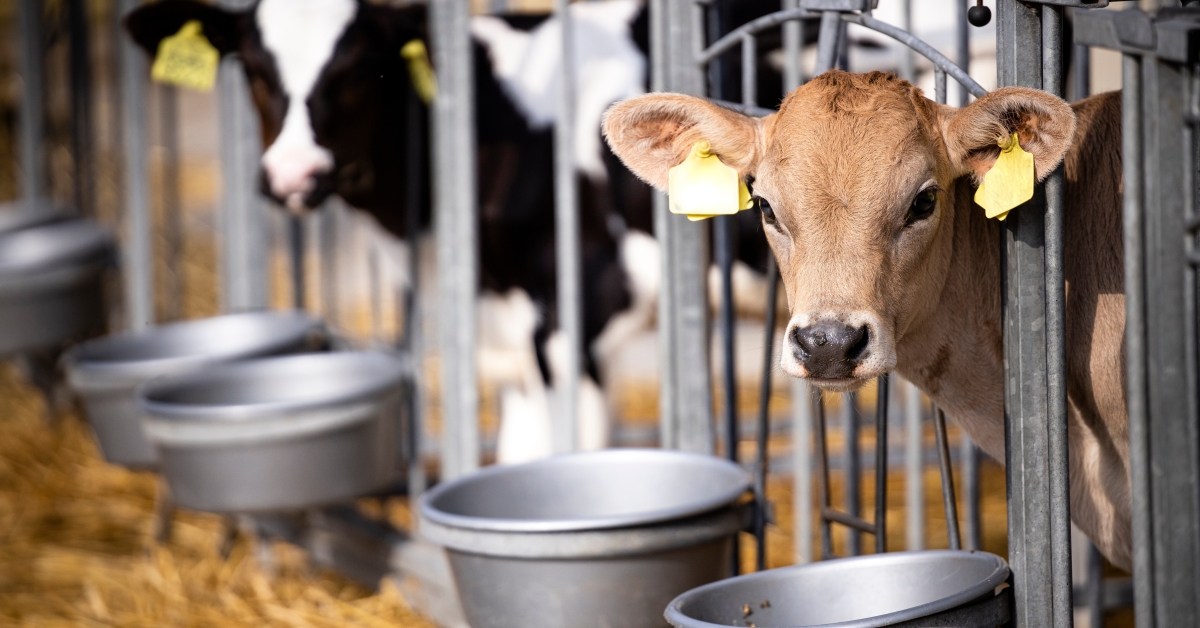
Inconsistent ingredient availability and global supply chain issues over the past few years have created difficulty in predicting the availability and price of common feedstuffs. Among these are ingredients such as oats, which are commonly used in calf starter feed for dairy replacement heifer and bull calves because of their perceived palatability and desirable nutrient profile. Calf starter should be high in readily fermentable carbohydrates but adequate in digestible fiber to support the fermentation necessary for proper animal tissue growth, and oats qualify on both counts, making them a popular and common ingredient in texturized calf starter.1 But what happens when oats are unavailable? Other feed ingredients may have the potential to replace them within texturized calf starter; however, research has been limited in determining the impacts of these oat alternatives on the performance and feed intake of young, growing calves.
Hubbard Feeds conducted a dairy calf research trial in conjunction with the University of Minnesota to determine the effects of replacing oats in different texturized calf starter formulations. The calves were divided into four groups. The first two were given simple starter diets consisting of a base pellet, corn, and molasses; one diet included oats and the other did not. The next two groups were given a diet of the same ingredients but with added fiber sources in the form of beet pulp, barley, and cottonseed hulls; again, one diet included oats and the other did not.
For the simple texturized starter diets, we saw a numerically greater body weight gain and calf starter intake in calves consuming the no-oat treatment through the first few weeks of life. Once these calves were weaned and consuming more calf starter, there was an even larger numerical difference between the groups, with the calves who were receiving oats in their diet both consuming more calf starter and putting on more body weight.
The opposite effect occurred in those calves receiving a texturized calf starter with added fiber ingredients, with or without the inclusion of oats. Not only was overall body weight gain numerically greater for calves on the no-oat treatment, but hip height gain was significantly higher for this group, and calf starter intake was numerically improved overall. See Table 1 for pertinent results. More detailed results and the abstract can be found in the American Dairy Science Association (ADSA) Proceedings from ADSA 2023 (poster #1472T).
We hypothesized that in the simple starter treatment with no oats, there may have been some rumen acidosis impacts due to the high level of readily fermentable starch from the corn and base pellet with no significant fiber sources. After analyzing results of this trial, we’ve determined that we can effectively substitute oats in texturized calf starters if other high-fiber ingredients are included in the base pellet and as part of the textured feed.
If your operation is looking to decrease oat inclusion or completely pull oats out of your texturized calf starter, please work with your Hubbard Feeds representative to get an appropriately formulated diet, ensuring that your calves will continue to perform and thrive.
|
Table 1. Calf starter intake (as-fed), average daily gain, and hip height gain. |
||||
|
|
Simple starter |
Simple starter, no oats |
Fiber ingredient starter |
Fiber ingredient starter, no oats |
|
Day 1-56 calf starter intake, lb. |
108.3 |
100.1 |
104.1 |
115.5 |
|
Day 1-56 ADG, lb./day |
1.59 |
1.50 |
1.54 |
1.64 |
|
Day 1-56 hip height gain, in. |
4.71 |
4.58 |
4.28 |
4.76 |
1 NRC, 2001
- Log in to post comments
